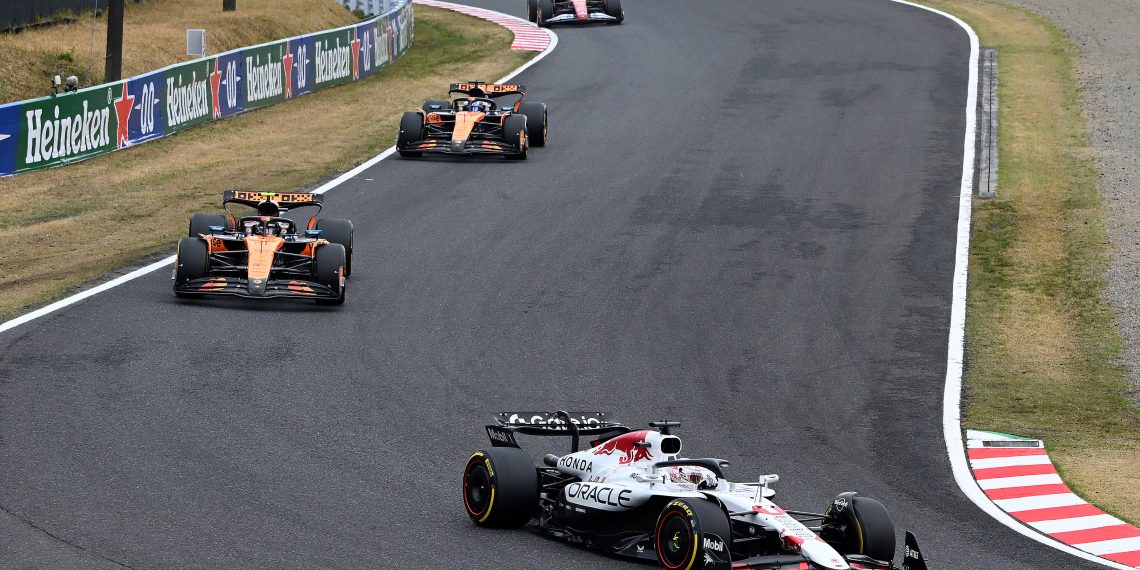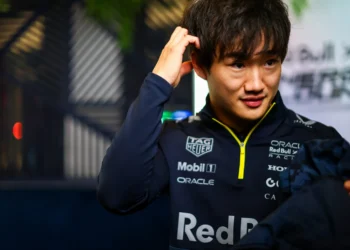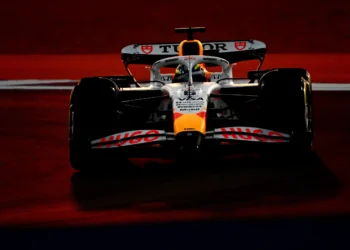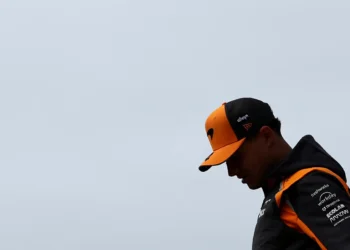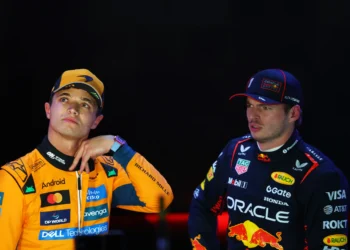The dark side of Formula 1: How aerodynamics are killing the thrill of racing
Formula 1 fans witnessed a lackluster Japanese Grand Prix as the cars struggled to overtake due to low tire degradation and the notorious dirty-air problem plaguing the sport. The difficulty of passing at circuits like Suzuka has been exacerbated by the inability of cars to follow closely and make use of DRS zones effectively.
The concept of reducing ‘overbody’ aerodynamics in the current generation of F1 cars was supposed to make racing more exciting by allowing cars to follow each other closely without losing downforce. However, the reality seems to be quite the opposite. The complex aerodynamic designs of modern cars have inadvertently created massive turbulence, making it challenging for drivers to get close enough to attempt a pass.
Studies have shown that cars can lose up to 47% of their downforce when following within 10 meters of another car, and 35% at 20 meters. This loss of downforce not only affects the car’s performance but also leads to increased tire wear and degradation, further hindering overtaking opportunities.
Teams have exploited loopholes in the regulations to enhance their cars’ performance, sacrificing the ability to race wheel-to-wheel as initially intended by the rule changes. Innovations like modified front wings and intricate floor designs have only added to the turbulent wake behind the cars, creating a vicious cycle of dirty air that hampers racing.
McLaren team principal Andrea Stella highlighted the escalating issue, stating, “Ultimately we keep adding aerodynamic downforce, which means that the losses are even bigger.” The pursuit of aerodynamic performance has turned F1 cars into high-speed aerodynamic machines that struggle to follow each other closely without losing significant performance.
The sport is at a crossroads, with discussions about introducing active aerodynamics and power unit overrides to improve overtaking opportunities in the future. However, until then, fans can expect more races where the dirty air problem reigns supreme, stifling the excitement and wheel-to-wheel action that makes Formula 1 truly thrilling.

